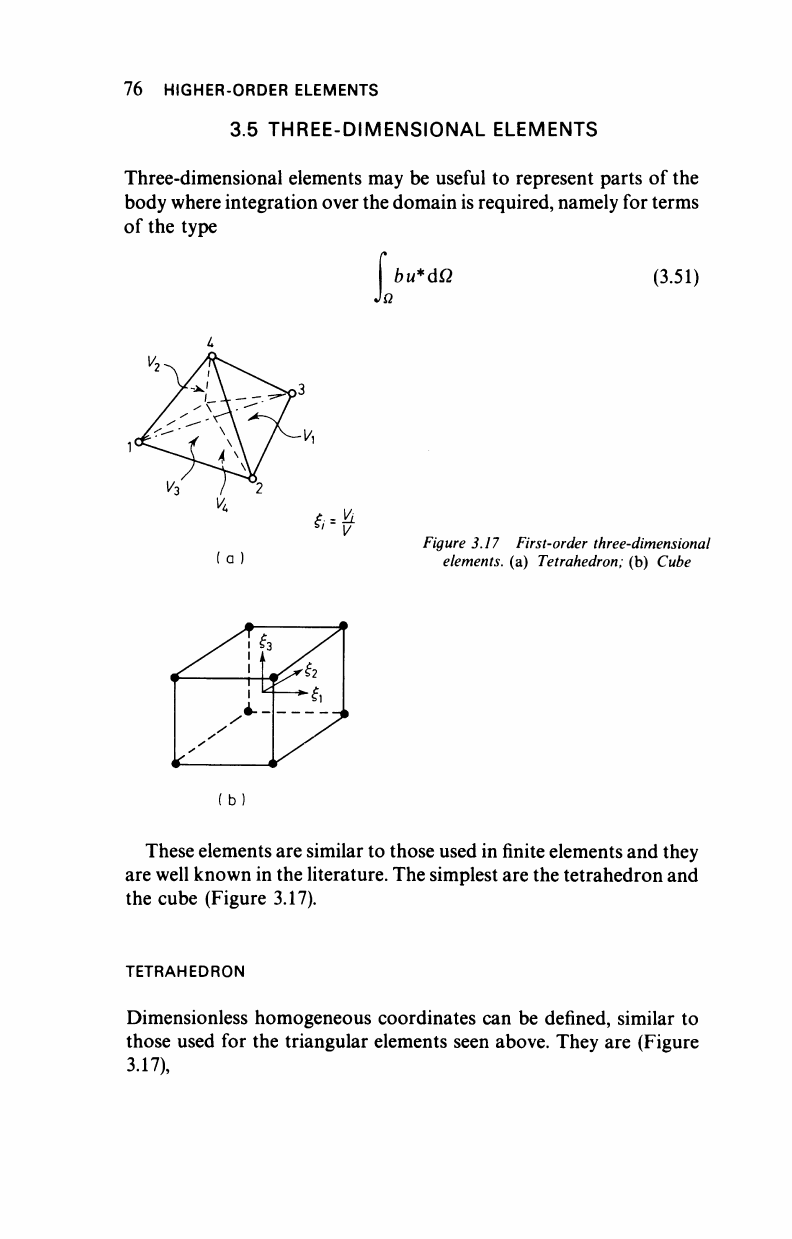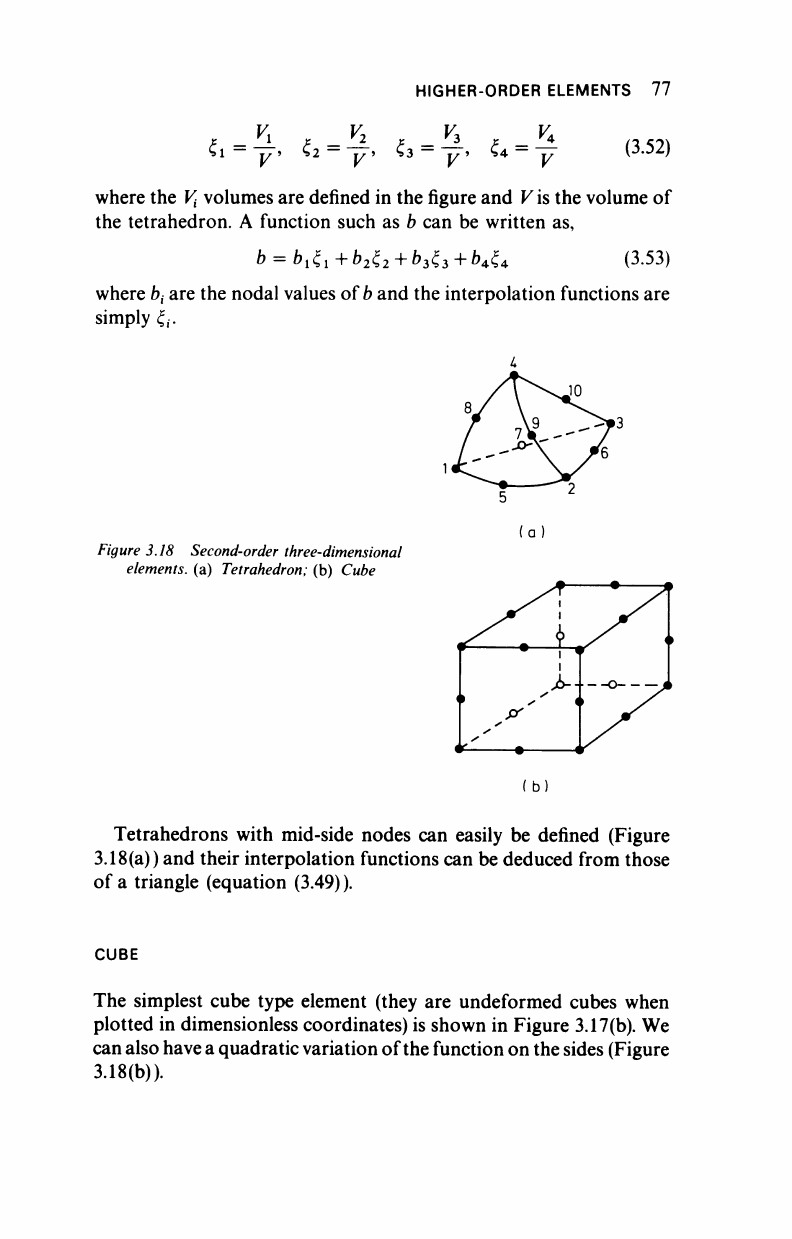
76 HIGHER-ORDER ELEMENTS
3.5 THREE-DIMENSIONAL ELEMENTS
Three-dimensional elements may be useful to represent parts of the
body where integration over the domain is required, namely for terms
of the type
i
1
bu*dQ
(3.51)
Λ
A
/
s
s
k
*3
^
»ί^ί
1
I
Figure 3.17 First-order three-dimensional
elements, (a) Tetrahedron; (b) Cube
(b)
These elements are similar to those used in finite elements and they
are well known in the literature. The simplest are the tetrahedron and
the cube (Figure 3.17).
TETRAHEDRON
Dimensionless homogeneous coordinates can be defined, similar to
those used for the triangular elements seen above. They are (Figure
3.17),

HIGHER-ORDER ELEMENTS 77
ίι-£,
t> =
% ia-£. ^
=
y
(3-52)
where the
V
{
volumes are defined in the figure and
V is
the volume of
the tetrahedron. A function such as b can be written as,
b =
b
l
t
l
+b£
2
+ b£
z
+ ba
A
(3.53)
where b, are the nodal values of
b
and the interpolation functions are
simply <j
f
.
(a)
Figure 3.18 Second-order three-dimensional
elements, (a) Tetrahedron; (b) Cube
Tetrahedrons with mid-side nodes can easily be defined (Figure
3.18(a)) and their interpolation functions can be deduced from those
of a triangle (equation (3.49)).
CUBE
The simplest cube type element (they are undeformed cubes when
plotted in dimensionless coordinates) is shown in Figure 3.17(b). We
can also have
a
quadratic variation of the function on the sides (Figure
3.18(b)).
..................Content has been hidden....................
You can't read the all page of ebook, please click here login for view all page.
